Coin Shunzhi tongbao
A round copper alloy coin with a square hole in the centre, called fangkong qian 方孔錢. These appeared in various denominations, mostly as tongbao 通寶 (“ordinary currency”) coins, which were worth one monetary unit, and yuanbao 元寶 (“original currency”) and zhongbao 重寶 (“heavy currency”), which had a higher face value. Such coins were in circulation as standard money, in many varieties and denominations, from the time of Emperor Gaozu 高祖 (reigned 618–626), first emperor of the Tang Dynasty (618–907), until the end of the Qing Dynasty (1644–1912). The inscription on the coin usually consists of two characters, reading from top to bottom, indicating the name of the imperial reign or the single reign period (nianhao 年號) in which the coin was minted. The other two characters are read from right to left. On the left-hand side of the coin, we always find the character bao 寶 ... more
A round copper alloy coin with a square hole in the centre, called fangkong qian 方孔錢. These appeared in various denominations, mostly as tongbao 通寶 (“ordinary currency”) coins, which were worth one monetary unit, and yuanbao 元寶 (“original currency”) and zhongbao 重寶 (“heavy currency”), which had a higher face value. Such coins were in circulation as standard money, in many varieties and denominations, from the time of Emperor Gaozu 高祖 (reigned 618–626), first emperor of the Tang Dynasty (618–907), until the end of the Qing Dynasty (1644–1912). The inscription on the coin usually consists of two characters, reading from top to bottom, indicating the name of the imperial reign or the single reign period (nianhao 年號) in which the coin was minted. The other two characters are read from right to left. On the left-hand side of the coin, we always find the character bao 寶 (wealth, preciousness), which in combination with the character on the right means “currency” or “money in circulation”. This is most often the character tong 通 (circulate, be uniform, general, or universal), but often it is also yuan 元 (original) or zhong 重 (weight), which usually denote coins with a larger face value. Thus, the entire inscription literally means “money in circulation during the time of this or that emperor” or “during this or that period of the reign of a single emperor”. Coins from the time of the last, Manchu Qing dynasty have, in addition to the inscription in four Chinese characters on the obverse, an inscription on the reverse, usually indicating the location of the mint. It was originally written in Chinese, then in Chinese and Manchu, and finally only in Manchu.
The coin on the image is well preserved, so the Chinese characters Shunzhi tongbao 順治通寶 on the obverse can be easily read, which means that it was minted during the reign of Emperor Shunzhi 順治 (reigned 1644–1661), the first emperor of the Manchu Qing Dynasty, who ruled over the entire Chinese territory as Chinese emperor. In this early period of the establishment of new dynastic institutions, the inscriptions on the reverse of the coins still appeared in various forms and fonts. The coin shown bears an inscription on the reverse to the right of the square opening consisting of the Chinese character Hu 戶, short for (Hubu 戶部), Bureau of Revenue in Beijing, where the coin was minted. (MG)
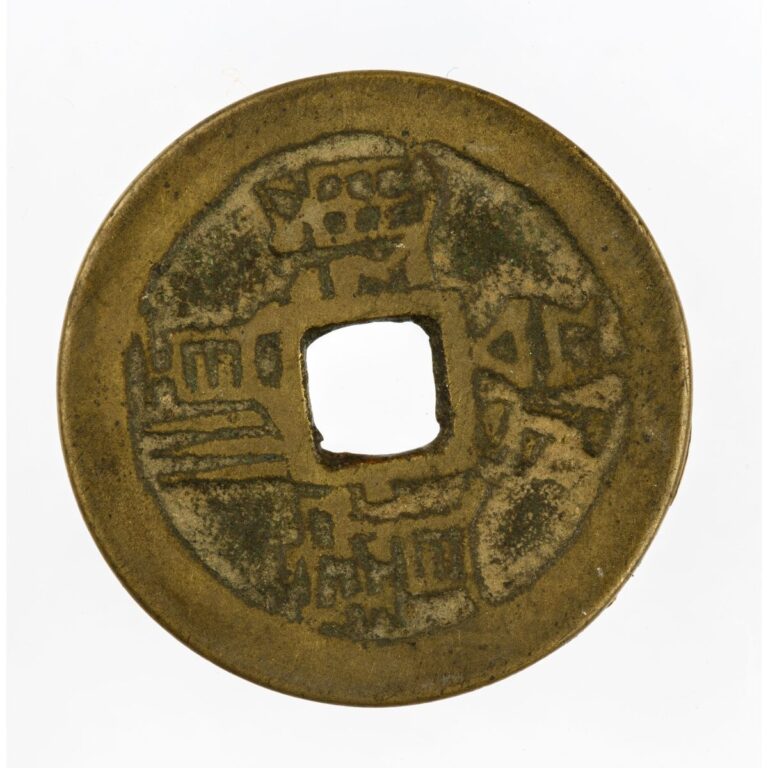

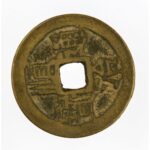
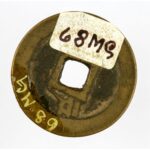






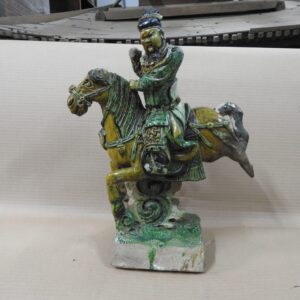













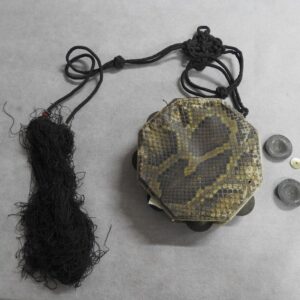














Do you have a comment or additional information about the subject?